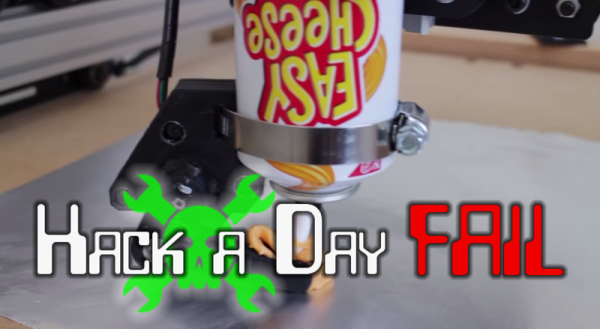 [Philip] got a tattoo of the Hackaday Skull ‘n Wrenches. His job is mostly office work in long sleeves, so everything’s good. The original logo was drawn in Flash by [Phil Torrone] of Adafruit, and reworked into a slightly more modern file format by [Elliot]. Yes, a skull and wrenches is a biker symbol and can be found in the emblem for a few military divisions (mostly for armored support). The Hackaday logo is by far the most cartoonish of all of these Jolly Wrenchers.
[Philip] got a tattoo of the Hackaday Skull ‘n Wrenches. His job is mostly office work in long sleeves, so everything’s good. The original logo was drawn in Flash by [Phil Torrone] of Adafruit, and reworked into a slightly more modern file format by [Elliot]. Yes, a skull and wrenches is a biker symbol and can be found in the emblem for a few military divisions (mostly for armored support). The Hackaday logo is by far the most cartoonish of all of these Jolly Wrenchers.
Speaking of scrawling the Hackaday logo on stuff, [Rodrick] was bored and needed a distraction last Saturday night.
We’ve seen perpetual motion machines on Kickstarter, and we’ve seen projects that may actually have some basis in reality. We’ve seen 12-year-olds put up a Kickstarter for a new gaming computer, and we’ve seen campaigns to build a bar in some random guy’s basement. There is only one project we haven’t seen on Kickstarter, until now: a campaign to build another crowdfunding platform. It is the Shortening of the Way.
You want a fail? This is a fail. [Chris] is working on a device that combines the familiar Arduino pinout with a CAN transceiver. A good idea, but if you build a PCB, you’re going to need traces. [Chris] sent his files off to our favorite purple board house and got back a sheet of copper laminate with holes in it. A good reminder to check your Gerbers before sending them off.
Live around Denver? There’s a hackerspace in Broomfield, Colorado that’s looking for a new space. They have a Kickstarter for the lease and they’re looking for some people to fill their space.
You kids out there with Pro Tools and Logic don’t know how good you have it. Back in the day, audio was recorded on magnetic tape with exacting mechanical devices called multitrack recorders. [Fran] fished her Otari 8-track recorder out of storage, and it’s a thing of beauty. Also out of storage is a 300 lb+ plate reverb.



















